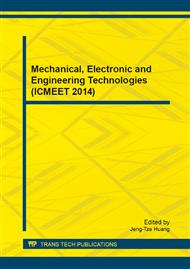p.24
p.28
p.32
p.36
p.40
p.44
p.48
p.54
p.58
Study on Chemical Mechanical Polishing Removal Mechanism of Monocrystalline Silicon
Abstract:
In this paper, material removal mechanism of monocrystalline silicon by chemical etching with different solutions were studied to find effective oxidant and stabilizer. Material removal mechanism by mechanical loads was analyzed based on the measured acoustic signals in the scratching processes and the observation on the scratched surfaces of silicon wafers. The chemical mechanical polishing (CMP) processes of monocrystalline silicon wafers were analyzed in detail according to the observation and measurement of the polished surfaces with XRD. The results show that H2O2 is effective oxidant and KOH stabilizer. In a certain range, the higher concentration of oxidant, the higher material removal rate; the higher the polishing liquid PH value, the higher material removal rate. The polishing pressure is an important factor to obtain ultra-smooth surface without damage. Experimental results obtained silicon polishing pressure shall not exceed 42.5kPa.
Info:
Periodical:
Pages:
40-43
Citation:
Online since:
April 2014
Authors:
Price:
Сopyright:
© 2014 Trans Tech Publications Ltd. All Rights Reserved
Share:
Citation:


